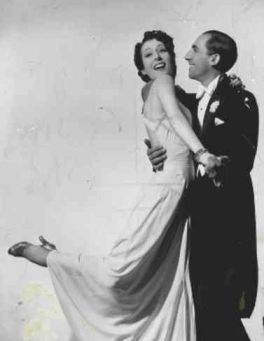Jeanne Madden was one of those girls who got to Hollywood thanks to their previous acting experience (and not just their looks), girls who were given plenty chances to become stars, and when that failed, were quickly sacked and pushed into oblivion. Luckily, in Jeanne’s case she knew when to quit, thus Hollywood did not need to brutally remind her time’s up.
EARLY LIFE:
Jeanne Ethel Madden was born on on November 10, 1917 in Scranton, Pennsylvania to Harry Madden and his wife, Grace Browning. Her older brother, Ralph C., was born in 1912.
Her father owned a boarding house, called “Holland Hotel”, and ran it together with her mother. They had a diverse cast of boarders, lodgers and guests in 1930, ranging from people from other states to people from other continents like several Welsh and Irish men. Yet, her father’s real passion was not real estate but rather music – he was an amateur musician (singer to be exact) and even founded his very own quartet, aptly named The Harry Madden Quartet. Her mother, Grace, was an accomplished pianist and served as accompanist to her daughter from the very beginning. Jeanne was a coloratura soprano, the highest possible voice, and it was clear a great future awaited the girl.
 Jeanne attended Central High School, and there her dramatic and musical talent shone brightly- she was the school’s star, playing in every school play. It paid off. In 1932, at the tender age of 15, Jeanne was already a featured soloist at many of the town’s prestigious functions, like Mothe’rs Auxiliary of the Crusade chapter, Order of de Molay, held at the masonic temple. In 1933, she was the star of her school’s cantata “In old Japan”.
Jeanne attended Central High School, and there her dramatic and musical talent shone brightly- she was the school’s star, playing in every school play. It paid off. In 1932, at the tender age of 15, Jeanne was already a featured soloist at many of the town’s prestigious functions, like Mothe’rs Auxiliary of the Crusade chapter, Order of de Molay, held at the masonic temple. In 1933, she was the star of her school’s cantata “In old Japan”.
News about the wildly talented girl traveled fast, and she was on the train to New York in 1934, becoming the protegee of the Metropolitan opera diva, Queena Maio. That same year she became a singer for the NBC Radio network. Jeanne graduated from high school in 1935 and enrolled into Duke University to further her education. Then, something unexpected happened.
In February 1936 she was noticed by the head of Warner Bros studio, the formidable Jack Warner, who wanted the girl signed right away. What Jack wants, Jack gets, and mid 1936 she was on her way to California. Her departure was the social event of the year in Scranton, gathering quite a large mass to the train station. Her father’s own quartet sang several songs, and she had a special police escort from the Hotel Holland to the station! One newspaperman summed it up nicely when he wrote:
“Scrantoninas who followed her progress from success to success remembered her as a child inheriting a musical nature, singing in the school concerts, a lovely young girl in white ,invariably overshadowing other talented students, singing her little heart out to school audiences. They watched her immaculate acting in “Wisteria” and “Pinaforte” and concluded that here was a young lady who would bring fame to her native city and distinguish herself and her family.”
CAREER:
By Hollywood standards, Jeanne was given a decent chance to become a star (acting opposite big names and in A class production) but her reviews were always dismal, proving that perhaps she was a great singer, but lacking as an actress. On the high side, those same dismal critics noted how likable and cute she was – while several actors/actresses managed to capitalize on their good looks or cuteness, forgo talent, and become stars, others need more to attain stardom, and sadly Jeanne was one of them. That “something more”, as per usual, never came.
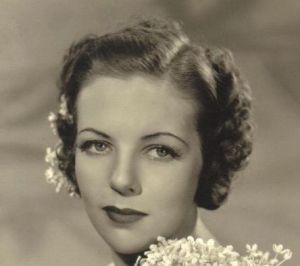 Stage Struck was supposed to be her big “star” role. A Busby Berkeley production with Dick Powell – what more could you need? A lot more, it seems. Not only was Busby in the middle of a manslaughter charge, but the story, the songs and dances are all rip offs of his earlier work (the superior 42nd STREET and FOOTLIGHT PARADE). Not that his movies have any story to start with, but the same old characters in same old situations with the same old massive scenes did not make the grade. Powell, Blondell and the old guard of actors like Warren William are good as usual, but it is Jeanne in her Ruby-Keeler-like-role that is the weak link in the chain. As I already noted, she did not have “it” – no sass, no personality, no elusive quality that makes somebody a star.
Stage Struck was supposed to be her big “star” role. A Busby Berkeley production with Dick Powell – what more could you need? A lot more, it seems. Not only was Busby in the middle of a manslaughter charge, but the story, the songs and dances are all rip offs of his earlier work (the superior 42nd STREET and FOOTLIGHT PARADE). Not that his movies have any story to start with, but the same old characters in same old situations with the same old massive scenes did not make the grade. Powell, Blondell and the old guard of actors like Warren William are good as usual, but it is Jeanne in her Ruby-Keeler-like-role that is the weak link in the chain. As I already noted, she did not have “it” – no sass, no personality, no elusive quality that makes somebody a star.
Despite her shortcomings, Scranton went mad for the young songstress, and here is an excerpt of what happened on the premiere of the movie:
Hollywood came to Scranton on Aug. 28, 1936. That Friday night, an estimated 6,000 people jammed the downtown streets to welcome hometown girl turned movie star, Jeanne Madden.
The Strand Theater hosted the premiere showing of her first movie, “Stage Struck.” Organized by Warner Bros. Studio and the Comerford Theater chain, it was the first such event of its kind in this city. Rain began hours before and continued incessantly but failed to deter the crowds. Spotlights illuminated the street, and anticipation filled the air.
The crowds were orderly – until the star’s car approached. Then their excitement gave way, and mayhem ensued. Firefighters and police officers formed lines on both sides of the throng to provide a lane through which Miss Madden and her party could walk. But the crowd pushed and shoved the officials. Mayor Stanley Davis, standing in the theater lobby, ordered police to call for additional men.
Several women and children were crushed in the tight crowd, fainted and had to be carried inside the theater, where Dr. Arthur Davis, director of public health, treated them. No one was seriously hurt, and Miss Madden was able to make it safely into the theater.
In the lobby, the star spoke a few words of appreciation to the crowd gathered there. A microphone had been set up for that purpose.
Inside the theater itself, Mr. Davis took the stage to present the hometown girl to her audience. And a girl she was. Born in 1917, Jeanne Madden had graduated from Central High School, where she appeared in many of its theatrical productions. She had a beautiful singing voice, made better through training with Queena Maria, the prima donna of the New York Metropolitan Opera Company. The aspiring actress had left for Hollywood little more than a year before she returned for this premiere.
“Stage Struck” starred Dick Powell as Broadway dance director George Randall and Joan Blondell as Peggy Revere, a wealthy performer with little talent who stars in Mr. Randall’s show only because she is backing it. On opening night, the temperamental Ms. Revere storms out, leaving chorus girl Ruth Williams, played by Miss Madden, to step into the lead role.
At the premiere, Miss Madden took the stage wearing a yellow evening dress of simple lines. She called Ms. Blondell “a peach” and described Mr. Powell as “a fine chap.” Miss Madden thanked the crowd for its “wonderful reception home” and said that she “felt just the same” as when she graduated from Central High School, “only, if anything, a little more nervous.”
“I hope you all like the picture, and I hope you all get ‘stage struck,'” she said, and bowed off the stage. She returned to acknowledge the ovation that the audience gave her, and asked, “Would you like to hear a little number that is very dear to me?” As the audience clapped and shouted, she began to sing “I’ve Done My Work,” a favorite of her father, the late Harry Madden.
The audience delivered a shower of flowers across the floodlights as she finished the song. She chose one bouquet, plucked several buds from it and, before leaving the stage, tossed them in the direction of her mother, who was seated in an upper box.
(taken from this link)
Sadly, the studio brass saw the writing on the wall, and Jeanne’s days as a star were numbered. Talent Scout was the type of film Doris Day would make in the 50s – the female lead is is a feisty but ultimately pure girl out for a career who falls in love and chooses marriage instead. When you can sum up the plot in one sentence like this, it can’t be good, and the movie was nothing spectacular. The fact that her leading man, Donald Woods, is better known as a character actor than a romantic lead today is proof enough.
 Sea Racketeers was that silly, low budget movie Republic Studios made by the dozen in the 1930s, and once you’ve seen one, you’ve seen it all. Nothing extinguished this one, and the leads, played blandly by Jeanne and Weldon Heyburn, sure did not help.
Sea Racketeers was that silly, low budget movie Republic Studios made by the dozen in the 1930s, and once you’ve seen one, you’ve seen it all. Nothing extinguished this one, and the leads, played blandly by Jeanne and Weldon Heyburn, sure did not help.
Just when it was clear there was little to no chance of her becoming a star, Jeanne gave up movies to get married and work in the theater. She had her only Broadway credit in Knickerbocker Holiday. This 1938/1939 feature was a political allegory with music by Kurt Weill and was so successful it was made as a movie and had several reruns. Yet, even this did not push Jeanne into a more permanent career on the stage.
After leaving both Hollywood and Broadway, she starred in operas like “Hansel and Gretel,” “The Duped Kadi” and “Secret of Suzanne.” While making Hansel and Gretel in 1940 she made headlines when, after noticing a mouse during rehearsals, her screams were so high pitched people had no idea what hit them.
Jeanne largely retired from showbiz by 1950s, but continued to sing for charity purposes.
PRIVATE LIFE:
One of the first things anyone noticed about Jeanne was how fresh she was, and the papers heralded her wholesome looks. Also of note was her talent of being able to sing so high as too actually shatter glass!
Jeanne was, by all accounts, a prim, proper small town girl, the ideal of every mother in the Mid West. She took her career and education seriously, but when the perfect guy came knocking down, there was no questions about her future plans – she married him!
Jeanne married George Keith Martin on June 3, 1938, in Elm Park Church in Scranton. They left Hollywood in Late May 1938 for the ceremony and never really came back. Martin was born in 1910 in New Jersey, and proved to be a great choice for Jeanne. The press heralded her happy marriage to a painter as early as 1939.
 Jeanne and Keith lived in a rented home in Kansas City, Missouri, in 1940. Keith served as the director of an art institute there. The papers of the time describe him as “Lecturer: the Institute’s director, husky, 30-year-old Keith Martin, onetime Harvard crewman and portrait painter.”
Jeanne and Keith lived in a rented home in Kansas City, Missouri, in 1940. Keith served as the director of an art institute there. The papers of the time describe him as “Lecturer: the Institute’s director, husky, 30-year-old Keith Martin, onetime Harvard crewman and portrait painter.”
The Martins marriage lasted for more than 50 years, and they had three sons between them: Harry, Keith and Robert. Keith Martin, born in 1946, became a brigadier in the Pennsylvania Army National Guard, and after he left the army found work as the news anchor at WBRE-TV in Wilkes-Barre. In 2003, he caught the eye of Governor Ed Randell, and became the state’s new homeland security director.
After her mother’s death, Jeanne returned to Scranton to run the family hotel, Holland Hotel, for several years.
Jeanne was highly active in the civic life in Hillslville, Pennsylvania, where they resided from the 1950s. She sang at charity gatherings and taught whole generations of children the art of singing.
Jeanne M. Martin died on January 15, 1989, in Moscow, Pennsylvania.
Her widower Keith Martin died on September 1997, in Luzerne, Pennsylvania.


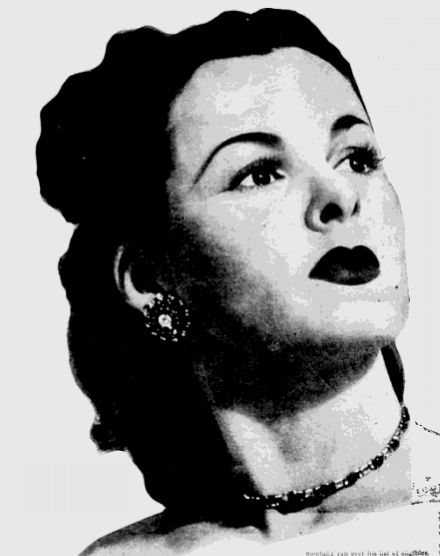
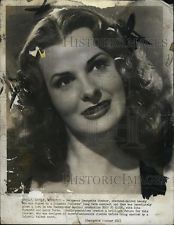





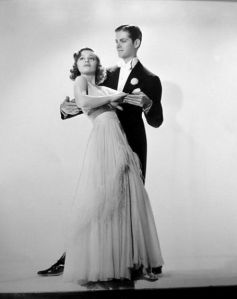
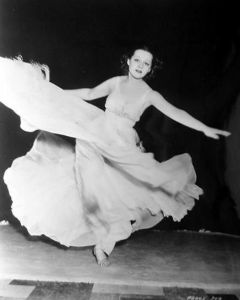
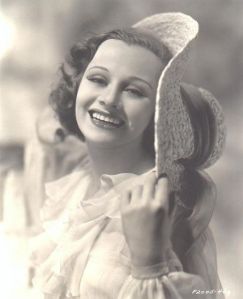




 Dee was a part of the golden age of MGM musical, one of the times in movie history that pure magic and escapism actually made good viewing. This is a great achievement for anyone in the showbiz industry, and it’s clear that she worked hard at her craft and was an elegant, accomplished dancer.
Dee was a part of the golden age of MGM musical, one of the times in movie history that pure magic and escapism actually made good viewing. This is a great achievement for anyone in the showbiz industry, and it’s clear that she worked hard at her craft and was an elegant, accomplished dancer.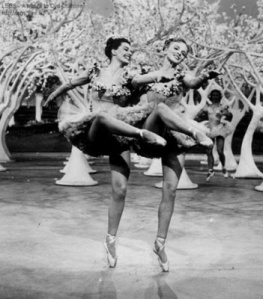

 Dee was often featured in newspaper columns in the late 1940s, pictured with a very young Elizabeth Taylor on several occasions- Dee was painted as a passionate swimmer who spent a chunk of her free time on the beach. Dee’s legs, toned from years of dancing, were also frequently on display, and won her several prizes.
Dee was often featured in newspaper columns in the late 1940s, pictured with a very young Elizabeth Taylor on several occasions- Dee was painted as a passionate swimmer who spent a chunk of her free time on the beach. Dee’s legs, toned from years of dancing, were also frequently on display, and won her several prizes. 
